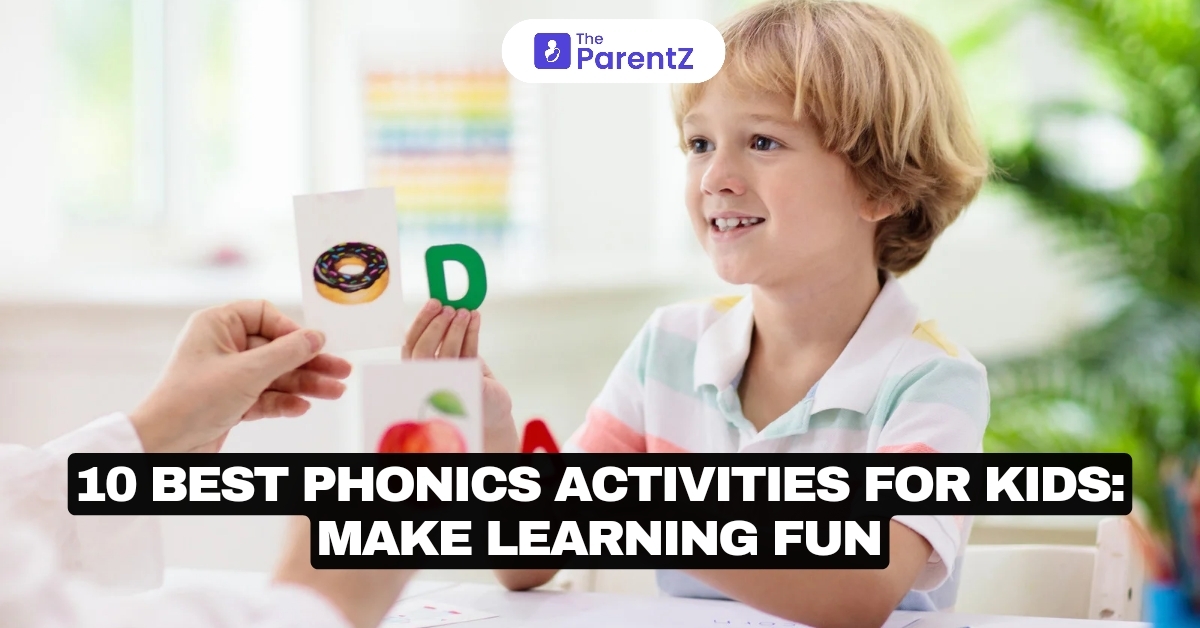Engaging children in phonics activities is essential for developing their reading and writing skills. Phonics, a way of teaching reading by correlating sounds with letters or groups of letters, can be fun and interactive through various activities. Here are ten of the best phonics activities that not only teach but also keep kids engaged.
10 Fun Phonics Activities
1. The Alphabet Game
This classic game involves giving your child a letter, and they must respond with a word that begins with that letter. To make it more engaging, encourage them to think of a rhyming word as well. This not only reinforces letter sounds but also expands their vocabulary.
2. Flip The Pizza
For pizza-loving kids, this activity is a hit! Create pizza slices from colored paper, writing different letters on each slice. Using a spatula, have your child “flip” the pizzas and say the letter on the back. This combines physical activity with learning, making it a fun and memorable experience.
3. Construct The Letter
Using playdough or clay, ask your child to shape letters as you call them out. This hands-on activity helps reinforce letter recognition while developing fine motor skills. You can also provide a flashcard of the letter for visual support, enhancing their learning experience.
4. Story Book Scavenger Hunt
Choose a page from a storybook and give your child a specific letter sound. Ask them to find and circle all the words that start with that sound on that page. This activity increases their phonics skills and encourages reading comprehension and book engagement.
5. Hopscotch Sound Game
Transform traditional hopscotch into a phonics game by writing letters instead of numbers on the ground. Your child must say the corresponding sound as they hop onto each letter. This physical activity encourages movement while playfully reinforcing phonetic sounds.
6. Letter Pong Game
Set plastic cups in a triangle labeled with different letter blends (like bl, sn, or st). Your child tosses a ping-pong ball into the cups and must say a word that starts with the blend on the cup. This game combines hand-eye coordination with phonics practice, making learning dynamic and fun.
7. Sound Walk
Walk around your home or yard and ask your child to find objects that start with a given sound. For example, if you say /m/, they might point out a mat or a mug. This activity strengthens phonics and helps expand their vocabulary by introducing them to new words.
8. The “I Spy” Game
In this classic game, give your child a sound, and they must find an object that starts with that sound. For instance, say, “I spy with my little eye something that starts with /b/,” and they might point to a book. This game encourages listening skills and phonemic awareness.
9. Flip & Match
Create two sets of cards with phonics words and lay them face down. Your child flips over two cards at a time, trying to find matches that start with the same letter sound. This memory game strengthens phonics and enhances cognitive skills and memory retention.
10. Guess The Word
Write a series of words that share a common letter sound on a board, leaving out one letter for each word. For example, write _AT for “cat” and ask your child to fill in the blanks. This activity encourages critical thinking and reinforces their understanding of phonics patterns.
Conclusion
Integrating these phonics activities into your child’s routine creates a fun and effective learning environment that encourages a love for reading and writing. Engaging children in playful learning enhances their phonics skills and lays a strong foundation for their future literacy development.








Be the first one to comment on this story.